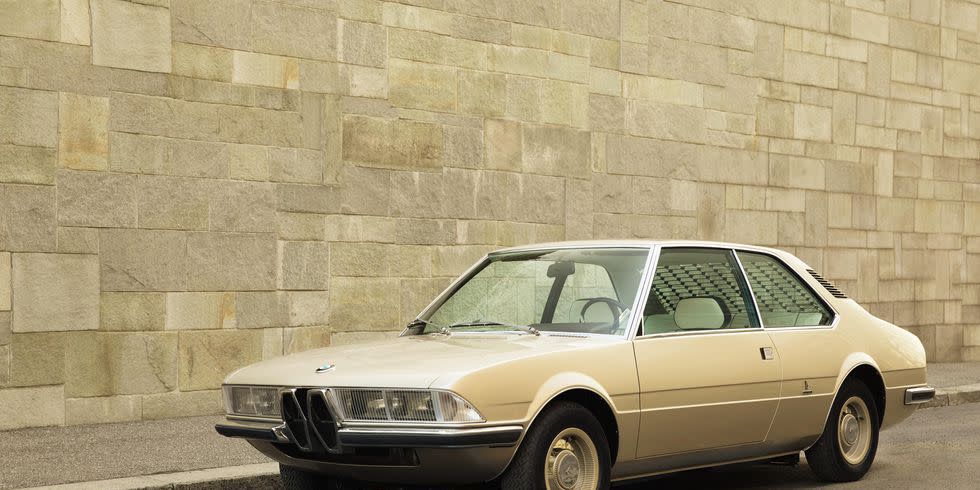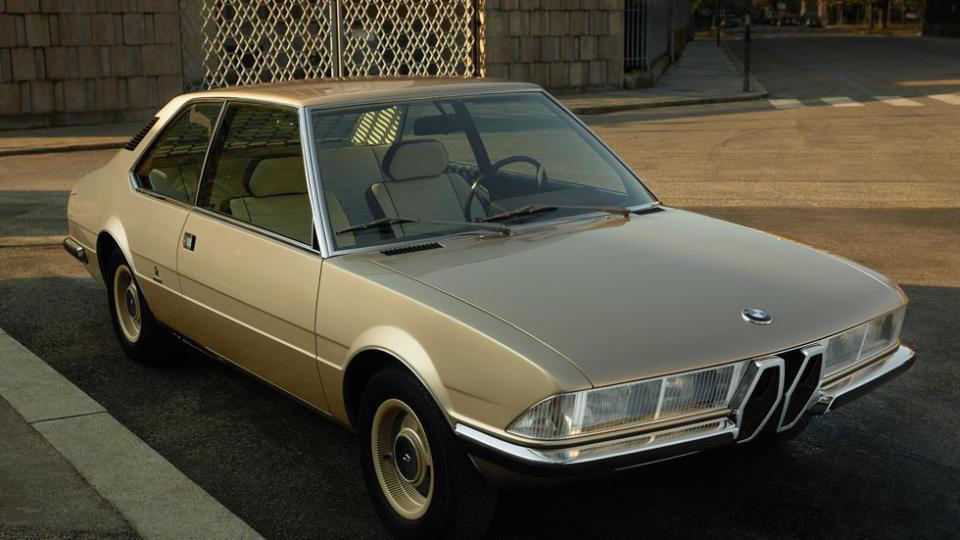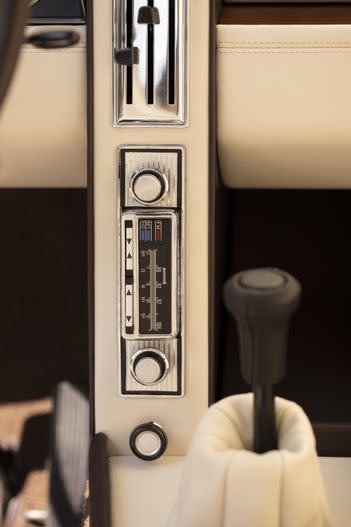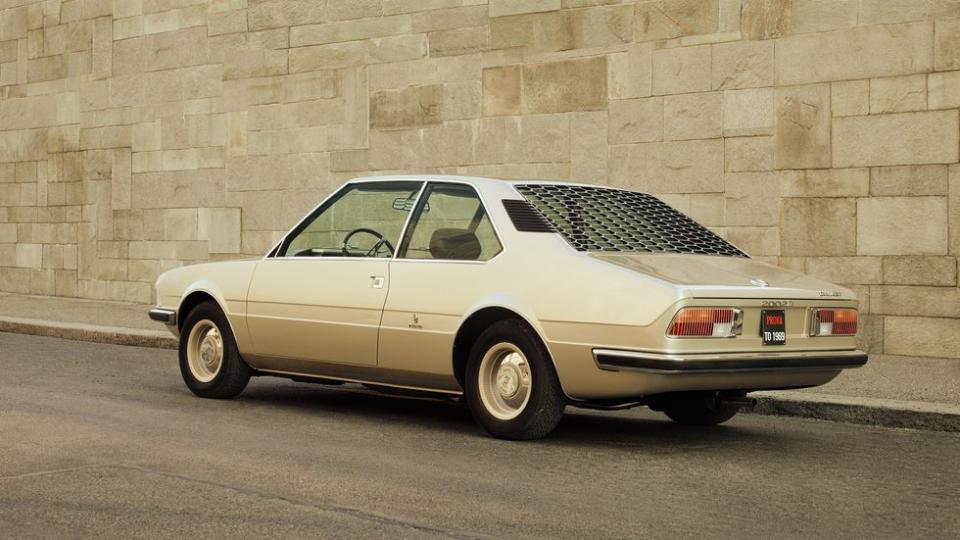BMW Reproduces a Concept Car that Disappeared in the '70s

BMW revealed a reproduction of its 1970 Geneva auto show coupe, the Garmisch, this week at the 2019 Concorso d'Eleganza Villa d'Este in Lake Como.
BMW Group design chief Adrian van Hooydonk spearheaded the project with the assistance of Marcello Gandini, the car's original designer, who is now 80 years old.
After the show, the one-off is being moved to the BMW Museum in Munich.
At the 2019 edition of the ultra-exclusive classic-car show, Concorso d'Eleganza Villa d'Este, held on the shores of Italy's Lake Como from May 24 through 26, BMW unveiled its latest concept car. But it was not a puce-colored self-driving, smart fabric-lined, electric-powered SUV like its recent Vision iNext. Rather, it was a forward-leaning, angular, auric coupe, first seen at the 1970 Geneva auto show and lost to the world sometime shortly after that.
The vehicle displayed was not the actual car that appeared in Switzerland nearly 50 years ago-named the Garmisch after a then popular German ski resort-but a painstakingly created reproduction, built under the stewardship of BMW Group design head Adrian van Hooydonk. But van Hooydonk was not alone in working out the details of the car. Because most of its material history had disappeared, the Garmisch had to be refashioned mainly from a few rough drawings and a bunch of grainy vintage photos. Fortunately, he had the assistance of the car's original designer, Marcello Gandini.

Gandini is best known for having designed a series of stellar Italian cars during his time at the helm of the Bertone studio from 1965 to 1980, as well as in the decades since, when he went out on his own. These include the Lamborghini Miura and Countach, the Maserati Quattroporte II and Shamal, the Lancia Stratos HF Zero, the Fiat X1/9, the Ferrari/Dino 308GT4, the Qvale (née De Tomaso) Mangusta, and the unforgettable Cizeta Moroder V16T. But Gandini also worked on a design that would influence the first BMW 5-series (E12) as well as the outrageous lime-green, sliding-steel-roofed BMW 2800 Spicup one-off concept shown by the Bavarian brand at Geneva in 1969.

This collaboration between these two countries-one dispassionate, one resolutely passionate-may seem odd (or, for students of 20th-century wars, terrifying). But in fact, BMW's work with Gandini and Bertone was part of a tradition of the German manufacturer teaming up with an Italian carrozzeria, dating back to the late 1930s when the Touring coachbuilding house created the lightweight, aluminum-bodied 328 Mille Miglia race car.
This collaboration of German engineers with Italian designers continued during the 1950s and 1960s under the design leadership of Giovanni Michelotti, who helped put BMW on the map in the States with the Neue Klasse vehicles, including the beloved 2002.

The Garmisch is, like many of the concepts BMW produced during that era, wildly atypical for the marque, overtly weird and experimental in a way that did not quite jibe with the stolid but delicate flow of vehicles in Munich's contemporary lineup. More straight-up kink than Hoffmeister kink, the golden-hued coupe looks a bit like a 2800 CS (E9) that has been redrawn using only straight lines, and then shrunken to 7/10 scale. The size makes sense, as the car uses the underpinnings of a 2002 tii, the fuel-injected version of BMW's famed sport-sedan.
Lending further weirdness to the exterior design are a floating vent high up on each C-pillar and a tessellated hexagonal mesh sun shade over the rear window. Also, glass-covered rectangular headlamps flank a bizarrely angular iteration of the traditional BMW dual-kidney grille. The quirkiness continues inside with a vertically oriented radio, an enormous flip-up mirror in the glovebox, and a leather shifter boot that resembles a baba au rhum pastry.
The Garmisch was not one of the more successful BMW concepts, and Gandini, who is now 80 years old, was apparently quite surprised when BMW reached out suggesting that they were going to rebuild it. But he was happy to help. And despite his advanced age, he still had sharp recall of some of the details, materials, and colors used on the original one-off. He was of particular use in nailing down the proper exterior color, a light champagne metallic, a shade that seems particularly fitting for the exclusive event at which the car's public unveiling took place.

Though this year's Concorso d'Eleganza hosted a subfield of crazy Space Age concept cars-including the Lamborghini Marzal, the Ferrari 512 S Modulo, and the Gyro-X gyrocar-the Garmisch did not compete. Instead, after the show, it is intended to be retired to the collection of the BMW Museum in Munich, where it will remain as an example of unconventional pan-European collaboration. And, like all concept cars, an evanescent representation of a future that may have been, but never was.
('You Might Also Like',)

